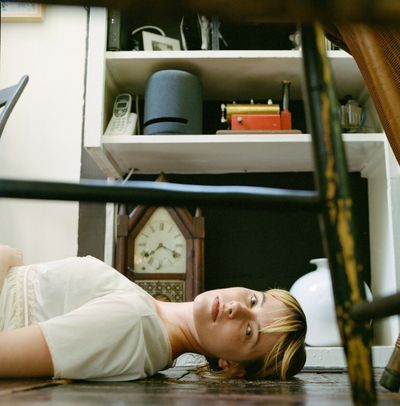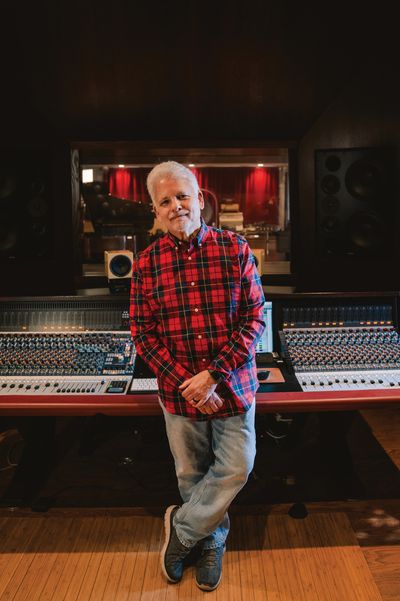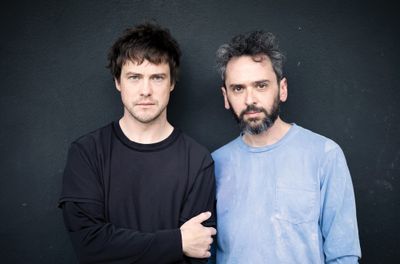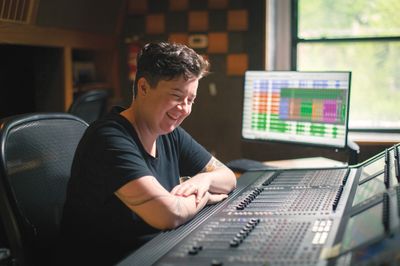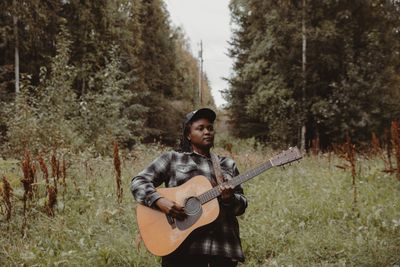First, could you provide some context and background on Move's development? You mentioned that it had been in development for more than five years?
Yeah, it's been many years. We've gone through many phases with this product, but the vision that we initially had is what we stayed true to. Of course, some things change, you learn new things, but Move is still the thing that we wanted to make from the beginning. One of the reasons it took quite a long time was that our team isn't very big. We had different phases where we planned to release this earlier but then Push 3 [Tape Op #157] came along, and we made an internal decision to allocate hardware engineering resources to Push.
People tend to forget that Ableton is still owned by the same musicians who started the company over 20 years ago. There are limited resources for development cycles, right? And building hardware is extraordinarily hard.
What added to the time it took is that we got ourselves into a lot of complexity with Move and Push. We were set on making something standalone from the outset, as we wanted that instrument quality – something that you can pick up and use unencumbered by wires, allowing you to get going quickly. That meant we had to solve things like building a standalone software stack and integrating Wi-Fi, which took us a really, really long time. Essentially, the company was getting into the business of building computers. It's a completely different type of engineering model, but this effort was worthwhile. I suppose everyone was also a bit naive about it, but it was simply something that required a great deal of patience.
As a standalone product, was Move conceived of and designed before Push 3?
They happened around the same time, but they are two different software platforms – the main difference really is that Push 3 runs Ableton Live inside. Both are Linux-based, running what we call "Ableton OS," but Push 3 runs on an Intel processor and for Move, we have an ARM processor. What's inside Move is actually the same software core that we have on Ableton Note, our iOS app. We've been developing this together, actually, from the start, so it's the same engine, same file formats, same sound structure, and same instruments, which is cool because now we have [that framework]. Basically, both products will benefit from additional development in the future. So, Move is like "Note in hardware," you could say, and Push 3 has Live inside. Two different ecosystems.

Was the retail price [USD $449] a factor in the early development of Move?
We always aimed to create something for under $500, which also meant making certain hardware choices, such as the processor inside. That's often the driving factor (which processor you choose). But also, we wanted to reach a different audience. I think it's still not an impulse purchase at that price point, but it's something we wanted to get into as many hands as possible. Plus, for people who are starting out or coming from different musical backgrounds, maybe they tried Live or Push and felt like, "This is maybe a little too much for me at this point in my music-making journey, but Move is something I can actually use," and later, grow into Live and Push.
Move's superpower, is its immediacy, right?
From a creative standpoint, yes, because Note has been designed to allow users to be creative quite quickly. Both excel at sketching rather than finishing.
I was talking to a friend who is a music educator who was saying, "I wish I had something that I could bring to the classroom, have all of the kids working on a piece of hardware that they can physically interface with rather than their laptops or phone screens so that they're using their ears." However, he wants their work to be able to sync to the cloud, much like a shared project that they are all iterating on. So, there's a tremendous amount of potential in the music education market for a device like this. Combined with Note, you have a powerful educational tool for harmonic theory and songwriting. Ableton Cloud and Note were released in parallel, right?
Yeah. At that stage, when Note came out alongside Ableton Cloud, we internally already knew we would have the same features set for Move and that we wanted this type of continuity. What happened is that they came out earlier than Move because we were able to move a bit faster on the mobile platform and had no hardware to engineer. So, from the ground up we had to make key decisions. As an example, how do we look at a drum rack and the effects [per track] – [on Note] we have a rack; you have the two effects, and it's the same for Move, one track, two effects. So, the way this simplified structure appears on Note was also actually informed by having Move around, much, much earlier – internally – and then we looked at things like, "What can we do, processor-wise?"
By that, do you mean the form factor or the software stack?
I mean the technology and, yes, understanding the limitations of the stack – the performance constraints. We made all these decisions on Move together with Note, like: It has to be like one instrument, two effects, so we can actually fit this into this package. I mean, as one key difference, Note can actually play back eight tracks (versus Move, which has four) – the iPhone processor is immensely powerful, more than what we have inside Move. So, this is something we ran into! We said, "Okay, we're not going to constrain Note," but it's one of these decisions we took a long time with to say, "Hey, should we do this, or should we just have four tracks on Note as well for full continuity?" But [the four-track "constraint"] is easy to work around. You can take the first four tracks of Note into Move, or you can change them around, so you can choose what you want to continue.
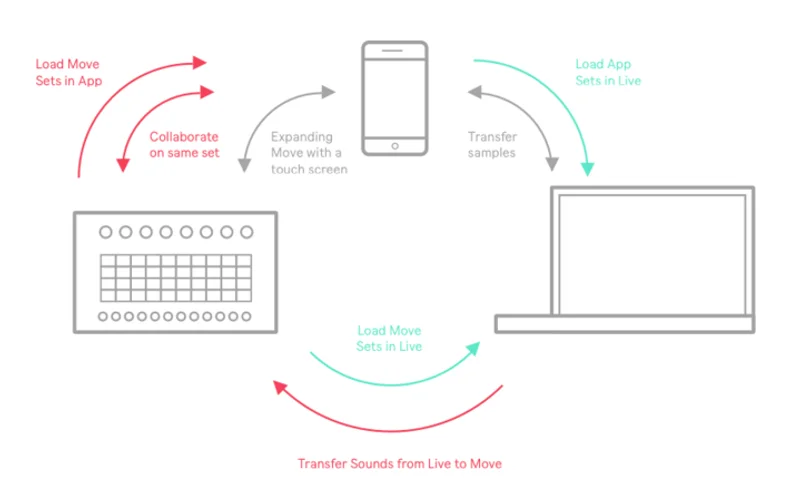
And there's a resampling function on Move as well. So, is there a future where a "bounce" shortcut could exist on Move, perhaps using one of the shift functions to resample the first three into the fourth without having to set up [full resampling]?
Yeah, right now, you have to set up resampling; you have to press record, then mute [the tracks you don't want to "bounce"]. I think where we want to go is a "bounce tracks" thing – we have this on the radar, actually. When you have this set of restrictions to work into, there are limits – you can creatively wrangle with them. You can still decide to bounce something, make a decision, and then you have it as a sample and move on with that. I think it is quite open in that regard, but it still has you committing to things, which I think is what we want people to do [with Move] – lean forward with that type of creativity here.
It's a big part of the Ableton [Live] workflow as well. Freeze and render is a [Live] creative workflow that folks are familiar with.
It can be used for CPU performance reasons, but [as on Move] this can be actually used for creative decision-making, and then you have a sample which you can treat totally differently with all the different envelopes, or like the playback effects and then start to work with that and see what you can come up with…
...add it to a Drum Rack and…
Yeah, I think the Drum Rack is kind of the centerpiece of this, because now we have the 16 pitches, which opens up so many options. Obviously, we're going to extend that, looking into things like sample capabilities, slicing, etc. [Move has since added sample slicing with the Move 1.5 beta software update. -ed.]
This does have some differences from the Push experience – even the layout of the session view – it's flipped.
That kind of magically fell into place. When we worked with the hardware stack that we had, we realized we'll be able to support four tracks in the (reliable) way that we wanted – we made sure [Move] never craps out. We wanted something that's constrained and always controlled so you can trust it. So, we had to decide on four tracks, and then (the "flipped" Session view) became a logical design conclusion. We tested those things quite a bit internally, and it was never seen as a problem. I know it's like a "holy" concept [the Live Session view, which works in rows of clips as opposed to Move's columns]. But it's actually quite fun – the motion is natural. We also decided to not have Scene launch buttons since we have this alternate session layout. You have the Session at the moment, but then there's a next step where you can structure a basic song, and that's something we are thinking about in the context of this.
Because right now you're technically limited to eight "scenes." Again, that's in the spirit of it being an idea or inspiration machine.
We have some ideas to make even more use of that [session/song] space. But coming back to limitations – this is definitely something we embrace with Move consciously. We had a lot of conversations with artists during Move's development, and we did hear that a lot in certain contexts. Some people will self-impose limitations to go into a certain type of creativity – we were always navigating attention between, "Oh, are we limiting too much?" or, "Is this the right type of limitation?" We had many, many different opinions on that. Obviously we have Live and Push, which are kind of without limitations. So, we've gone for a different philosophy here with Move, which took a lot of internal debate but just seeing how people create with Move today… I think it's a good call. And what we have here now is an option to choose in the Ableton system of products to work that way, but we also have other options, which we can clearly embrace as well. We think about it a lot like journeys within the Ableton product system. You can start from different points and choose different tools for different contexts.
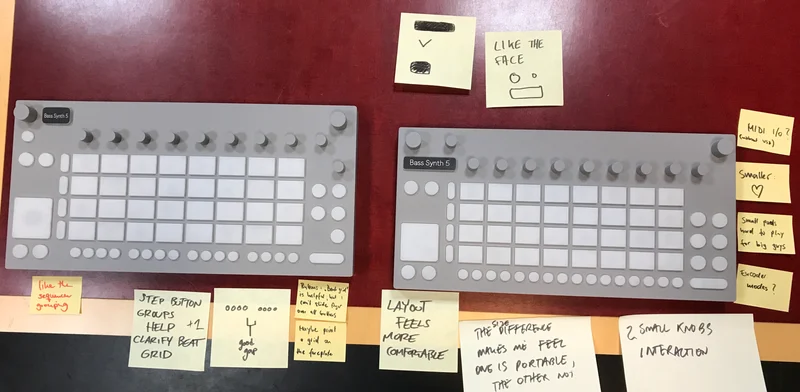
Could you speak to that a little bit? What is the ideal workflow for a user that is using Ableton as their DAW, or they have a Push 3, and they have a Move. How do you envision that interconnectivity and that sort of "round-robin" aspect of the products?
It's more likely that you would start something on Move or Note, and that I think they're, in a certain way, interchangeable, depending on what you have available. I mean, Move is quite portable, but then there are moments where you only have your phone, and that's going to be the thing you begin something with. But Move is the next step where you have more tactile control, more expression, and you have the pads. Move is really a different feeling, where you get a bit more locked in and have more tactile control over the sound. And then from there, you can see people maybe going to the studio, into the bigger environment which is Live or Push. We support the cloud on all three, Move, Push, and Live. You can imagine you come back from traveling, or the couch, or your home studio, and then you go into a bigger environment, where you have hardware, you have all your studio equipment, the speakers, and by then your project is in Push or Live. But currently, that's a one-way street because we can't technically go back [from Live or Push into Move] because Move is a much, much smaller subset of what Live and Push can do. So, at the moment, we cannot support this, although we hear this a lot – this will be a long-term development of bringing a set from those bigger products into the smaller ones. We have to see. One aspect we're looking at is bringing individual sounds from Live into Move and Note. Where you can build Drum Racks or Drift presets, so you can take your own sounds, your own palettes, or colors you want to paint with and then bring them into Move. What I also like is people can then start sharing Drum Racks, which could be super compelling. We don't want to have Packs for now – that might come later, but the Drum Kit as the centerpiece is something that could be shared nicely. You also have the Move Manager website. You just download the set, double-click, and then it opens in Live, so it's just a local way of doing it, and you don't have to rely on the cloud, which was important for us that you can transfer sets locally as well. We want the basic Ableton Cloud functionality to be free. There are server costs, so we limit the number of tracks in Ableton Cloud to eight, which feels correct because you can only work on so many ideas simultaneously, but it doesn't incur too much cost for us at the moment. Again, we're not a huge company, but we're building this quite complex system, which is something we're also learning how to deal with, and it's not always easy.
At this point you're fundamentally developing software for four different sets of silicon, right?
Right.
One of the things that struck me, too, is the design of the sequencer and the shift functions. If I were to be a jerk and take a high-powered flashlight and look for additional unused symbols (below the Move surface), would I find any?
[laughter] Have you seen any? I mean, not all of them are used at the moment, right? Let's say we have some gaps: if interesting features come along, we might light up these buttons. [laughs] It's software in the end. It's a hardware product, but underneath we run in software and Ableton is a software company, so we want to put a lot of updates out for this over a long time. Also, we don't want to make a ton of new products all the time, so this is a new platform, and we want to continue to make it better for a really long time.
How much thought has been put into Move as a live performance machine?
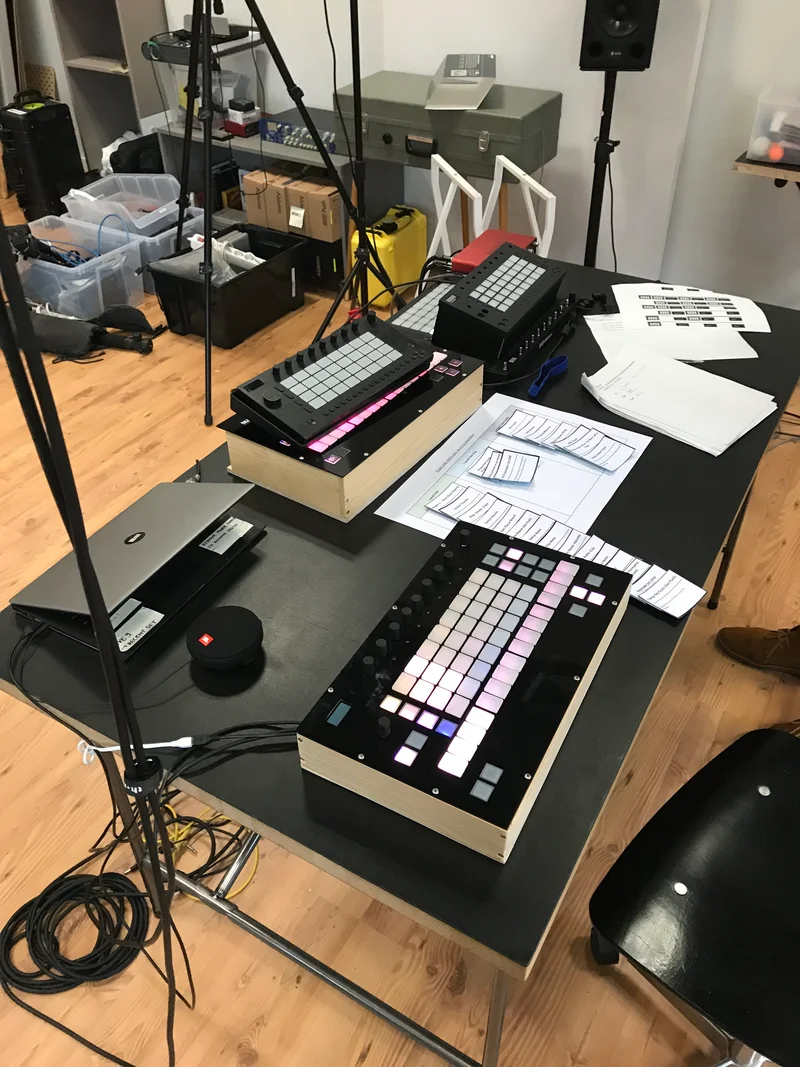
The vision for Move in terms of live performance is more something of an instrument you integrate into your performance, maybe to play drums or play some sequences. We don't claim that this is something you can perform a full live set on. [The better option] would be Push because you can't take your set from Live into Move. I come from a band background, and I can totally see someone bringing certain parts to perform with the band on Move or maybe the drum loop or pattern for a specific song – those kinds of things. That's why we also want to have this sound export from Live. Maybe you've built your Drum Kit for a specific song, and this would make it easy to bring that here [to Move] in collaborative environments. One aspect that's nice is if you play together with multiple Moves you have Ableton Link, so you can link these up and have the same tempo.
Can you tell me about the documentation of the UX and how you think about discovering and remembering features on the device?
There is a good example of this: we put these playback effects on the first instrument page, but then there is a second page accessed by holding shift and then touching the wheel – Parameter Banks – and that way you can go one level deeper and then you have the main bank, which is the one you always see, and this idea of a secondary bank. But we have absolutely seen that this is not very discoverable. It came from the idea of not imposing too much complexity and having the most important things on the front page, but now we've created a situation where people don't find that second and can't remember. We did not succeed in that. So, we're working on iterating on that design to make it a little bit quicker. These are the decisions we spend a ton of time on, iterating, making many design options, and often prototyping and testing them internally. In that case, we decided on one option, we're getting feedback internally as well as from artists, and we have to be open to iterating on that kind of thing. I come from a usability background, UX; I want to get these things right because they all compound and, in the end, define the feeling of the device – if there are a million little paper cuts that are kind of weird, the whole thing is not going to feel intuitive and we want the opposite. We want it to feel intuitive, but it means you have to touch every little design decision, see if it's discoverable, intuitive, and usable, but at the same time not imposing too much complexity, and that's also what took us quite some time to make it feel like that. It's super rewarding when you see people pick it up and say, "This is so intuitive," and they just create quickly. Just try things out, and then it feels good; you press Capture, like this whole flow of building something. That's when we feel rewarded as instrument makers and designers, because that's the stuff we spend days on just to make that decision right.
I know that you are all performers and artists in your own right, so there's a great deal of feedback that comes from that culture internally. Do you have internal betas?
Yeah, that's where we usually start. We always start internally, so our colleagues are the first to try something, then we have a small set of external testers that receive betas quite early, and then we have the public beta, usually. So, it's staggered, like maybe 20 or 50 people using it internally. In the beginning we didn't have many units, so it's just us as the team, but now we have maybe 50 people using it internally, and then we have another 20 to 30 external testers, and then it hits the public. And it's the same, I think, for Live and other things. So, you would want to catch these things early – but sometimes you would never know until it goes out to thousands of people. Sometimes, there's a tension between your own artistic vision of what you are building and what you are hearing from people. We don't use too much usage data, those kinds of things. It's mostly putting a thing in front of people, in front of yourself, make sure music is made with it, and then pay attention and learn from that.
It strikes a nice balance between having some degree of intent, having a take, and being thoughtful about that take.
Exactly, and it's ultimately serving other people's creativity rather than our own with this. We want to give you something that doesn't necessarily impose a certain musical style or a certain approach but gives you, in this case, a sketchbook. The other cases may be a canvas, but something for people to express themselves and then navigate this fine line of choosing how much you impose.
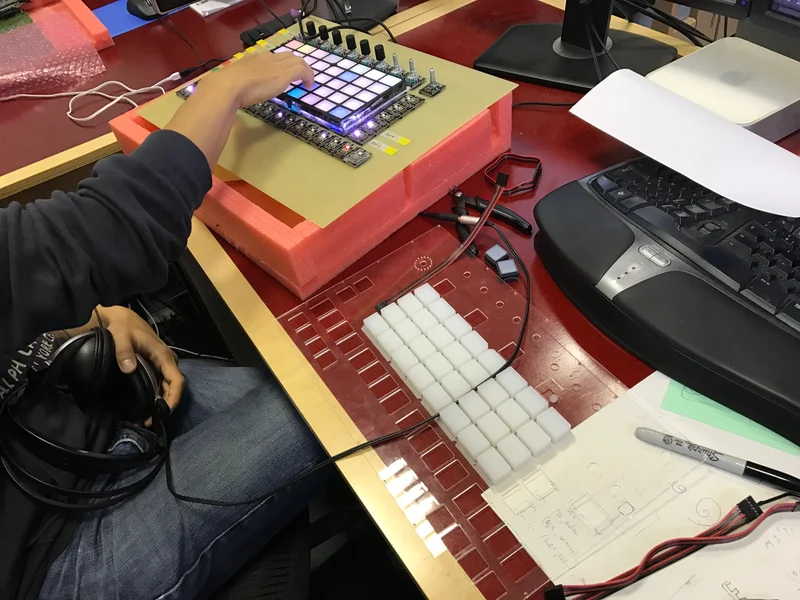
One of the headlines around the standalone Push was the ability to upgrade it and service the battery. Is there a similar approach to Move on any level?
It's interesting, because the first Move hardware was conceived before Push! For Push, we really invested in the idea of sustainability and upgradeability. Move is not, unfortunately, on the same level as that approach. So, you don't have this user-replaceable battery in Move. So, at the moment, we don't recommend user replaceability. However, we're working on repairability projects because it's super important for us that people can use this for a very long time. Let's just say we want to make it really easy to use it for a long time and replace things, but Push is a step ahead in that regard.
The speakers are way better than I would expect in this small form factor. I worried initially about distorting them, but found there was an internal limiter…
I guess that is an interesting story, too. It was one of the things that was quite contested internally, and the first versions of the Move speakers really didn't sound good. And it was like, "But we have this idea, we believe in this idea of something you can just pick up, and we need those speakers in there." I was very obsessed with the idea of onboard speakers, and people were like, "Come on, give it up." But then, one day, we did go to the engineers, and my colleague Chris, the designer, looked into how we could use the space below (points to the underside of Move) to physically control the airflow in the way that gave us a little bit more bass response. So, that was one thing we did, and another was to build a custom DSP with some harmonic excitement happening. Once we had this in place and we listened to it, it was like, "Okay, now we don't need to be ashamed of them anymore." [laughs] Now I see people gathering around the thing, making music, and they're talking about the song, and you get the sound of it. Of course, it's not studio-quality sound from the speakers, but it enables a form of collaboration and intuition that I'm super happy about.
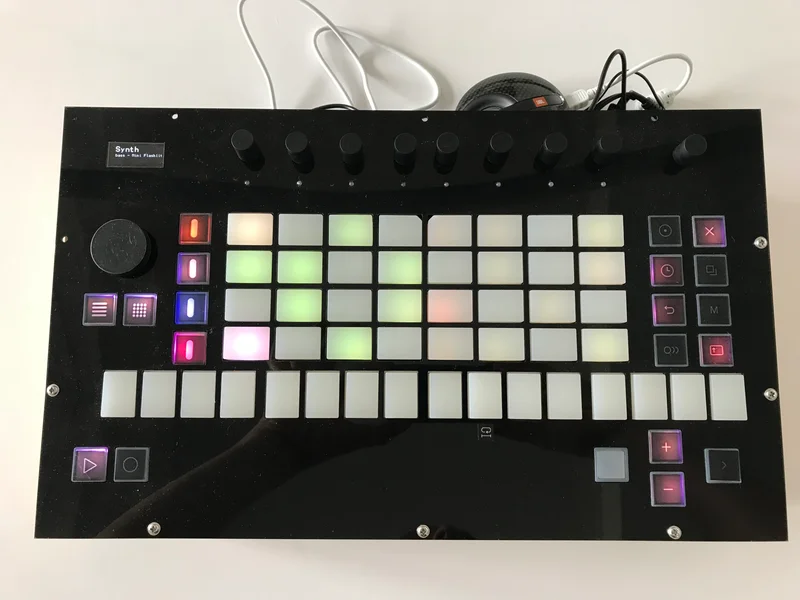
Such a cool device! You've done a very difficult thing. [laughter] Are you nervous about the release at all?
It's a very interesting time. [laughs] I mean, honestly it's a huge relief, like a release of energy, because we've been working this for so long, and before the release you can't show it, you can't go out with it, you can't even talk about it. Not even to your friends who haven't signed an NDA [Non-Disclosure Agreement]! Over the time of this project, I started a family; I have two kids now, and the oldest one is in school! It's a whole phase of my life, so I'm super happy, and from what we hear people are quite happy about what we're offering and like the type of creativity that Move is hopefully enabling for them.
![]()
